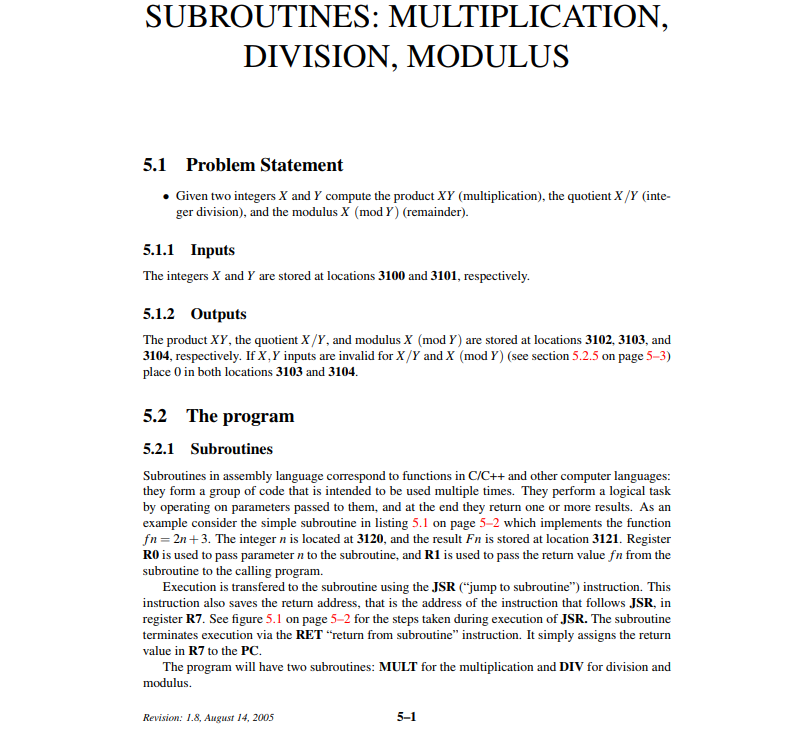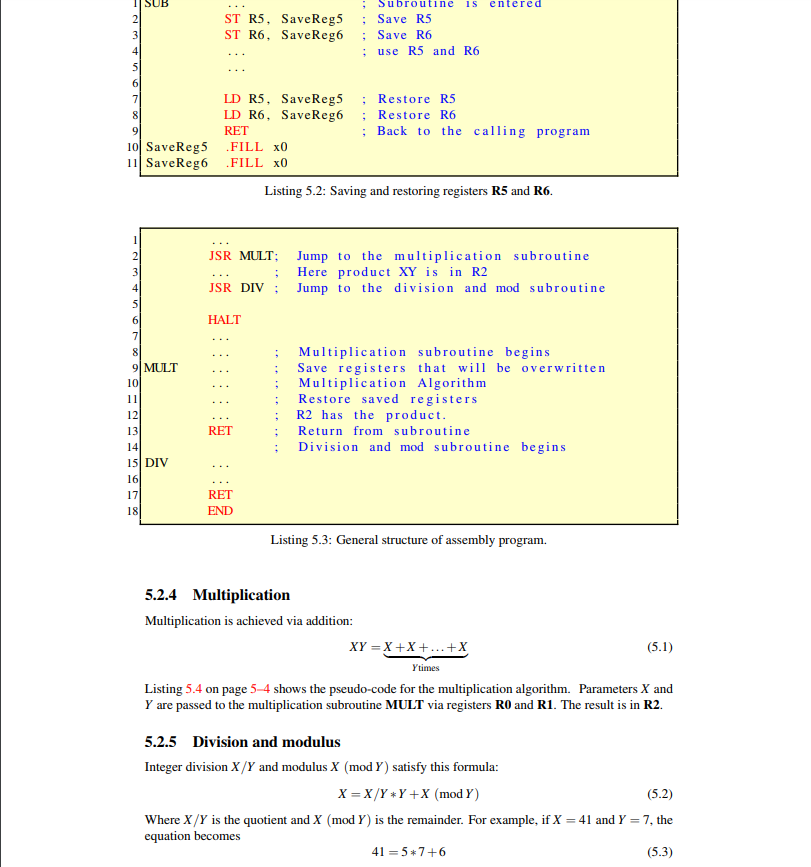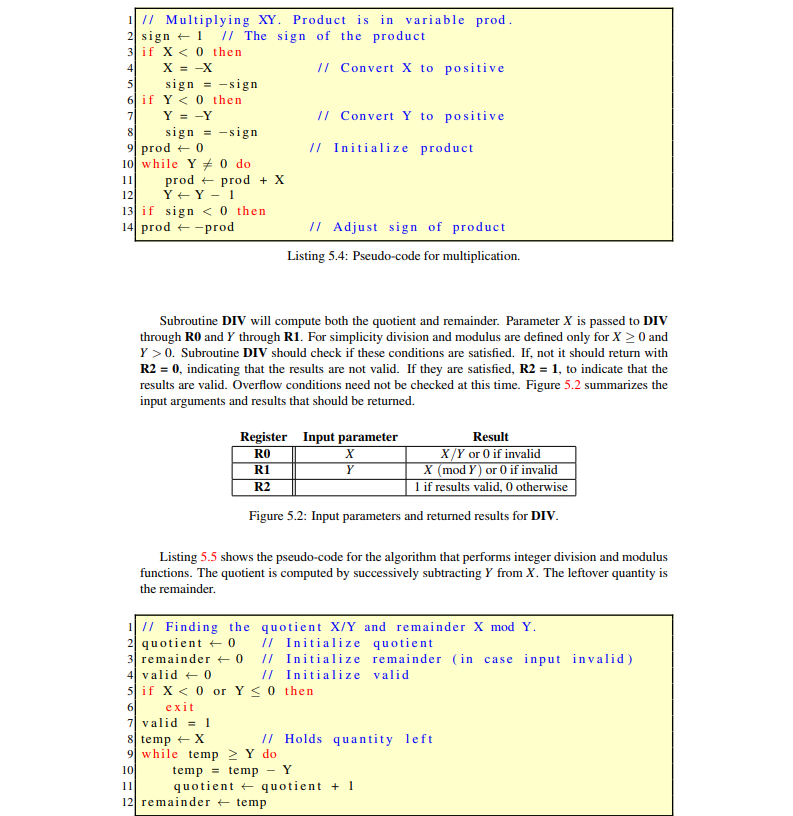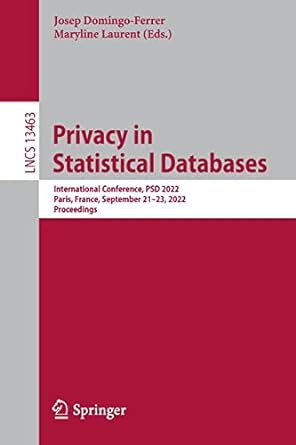Question
Has to be in LC3 Assembly I need help with the following. I wrote below, but it is wrong. I do not get the desired
Has to be in LC3 Assembly
I need help with the following. I wrote below, but it is wrong. I do not get the desired outcome and a lot of errors. Can someone please write a new code that works with comments. Thank you




.ORIG x3000
LDI R0, X ; Argument X is now in R0
LDI R1, Y ; Argument Y is now in R1
LDI R2, Z ; Argument X*Y is now in R2
LDI R3, A ; Argument X/Y is now in R3
LDI R4, B ; Argument X%Y is now in R4
JSR MULT ; Jump subroutine Multiplication
JSR DIV ; Jump subroutine Division
JSR MOD ; Jump subroutine Remainder
STI R2, Z
STI R3, A
STI R4, B
HALT
X .Fill 3100 ; Address where X is located
Y .Fill 3101 ; Address where Y is located
Z .Fill 3102 ; Address where XY is located
A .Fill 3103 ; Address where X/Y is located
B .Fill 3104 ; Address where X%Y is located
MULT AND R0, R0, x0 ;Clear R0
AND R1, R1, x0 ;Clear R1
MUL R2, R0, R1 ; R2
LDR R2, R2, Z ; R2
RET
DIV AND R0, R0, x0 ;Clear R0
AND R1, R1, x0 ;Clear R1
MOV edx, 0 ;Clear dividend,high
MOV AX, R0 ;dividend,low
MOV CX, R1 ;divisor[AX=X, DX=Y]
IDIV R3, AX, CX ; R2
LDR R3, R3, A ; R2
RET
MOD AND R0, R0, X ;Clear R0
AND R1, R1, Y ;Clear R1
MOV eax, X ;Clear dividend, high
MOV R0, AX, X ;dividend,low
MOV R1, CX, Y ;divisor[AX=X, DX=Y]
IDIV R4, AX, CX ; R2
LDR R4, R4, B ; R2
RET
.END
SUBROUTINES: MULTIPLICATION DIVISION, MODULUS 5.1 Problem Statement Given two integers X and Y compute the product XY (multiplication), the quotient X/Y (inte- ger division), and the modulus X (mod Y) (remainder). 5.1.1 Inputs The integers X and Y are stored at locations 3100 and 3101, respectively. 5.1.2 Outputs The product XY, the quotient X/Y, and modulus X (mod Y) are stored at locations 3102, 3103, and 3104, respectively. If X, Y inputs are invalid for X/Y and X (mod Y) (see section 5.2.5 on page 5-3) place 0 in both locations 3103 and 3104 5.2 The program 5.2.1 Subroutines Subroutines in assembly language correspond to functions in C/C++ and other computer languages: they form a group of code that is intended to be used multiple times. They perform a logical task by operating on parameters passed to them, and at the end they return one or more results. As an example consider the simple subroutine in listing 5.1 on page 5-2 which implements the function fn-2n+ 3. The integer n is located at 3120, and the result Fn is stored at location 3121. Register R0 is used to pass parameter n to the subroutine, and R1 is used to pass the return value fn from the subroutine to the calling program. Execution is transfered to the subroutine using the JSR (jump to subroutine") instruction. This instruction also saves the return address, that is the address of the instruction that follows JSR, in register R7. See figure 5.1 on page 5-2 for the steps taken during execution of JSR. The subroutine terminates execution via the RET "return from subroutine" instruction. It simply assigns the return value in R7 to the PC The program will have two subroutines: MULT for the multiplication and DIV for division and modulus Revision: 1.8, August 14, 2005 5-1 SUBROUTINES: MULTIPLICATION DIVISION, MODULUS 5.1 Problem Statement Given two integers X and Y compute the product XY (multiplication), the quotient X/Y (inte- ger division), and the modulus X (mod Y) (remainder). 5.1.1 Inputs The integers X and Y are stored at locations 3100 and 3101, respectively. 5.1.2 Outputs The product XY, the quotient X/Y, and modulus X (mod Y) are stored at locations 3102, 3103, and 3104, respectively. If X, Y inputs are invalid for X/Y and X (mod Y) (see section 5.2.5 on page 5-3) place 0 in both locations 3103 and 3104 5.2 The program 5.2.1 Subroutines Subroutines in assembly language correspond to functions in C/C++ and other computer languages: they form a group of code that is intended to be used multiple times. They perform a logical task by operating on parameters passed to them, and at the end they return one or more results. As an example consider the simple subroutine in listing 5.1 on page 5-2 which implements the function fn-2n+ 3. The integer n is located at 3120, and the result Fn is stored at location 3121. Register R0 is used to pass parameter n to the subroutine, and R1 is used to pass the return value fn from the subroutine to the calling program. Execution is transfered to the subroutine using the JSR (jump to subroutine") instruction. This instruction also saves the return address, that is the address of the instruction that follows JSR, in register R7. See figure 5.1 on page 5-2 for the steps taken during execution of JSR. The subroutine terminates execution via the RET "return from subroutine" instruction. It simply assigns the return value in R7 to the PC The program will have two subroutines: MULT for the multiplication and DIV for division and modulus Revision: 1.8, August 14, 2005 5-1
Step by Step Solution
There are 3 Steps involved in it
Step: 1

Get Instant Access to Expert-Tailored Solutions
See step-by-step solutions with expert insights and AI powered tools for academic success
Step: 2

Step: 3

Ace Your Homework with AI
Get the answers you need in no time with our AI-driven, step-by-step assistance
Get Started


